







Internet Protocol television (IPTV) is the delivery of television content over Internet Protocol (IP) networks. This is in contrast to traditional delivery through terrestrial, satellite, and cable television formats. Unlike downloaded media, IPTV offers the ability to stream media in smaller batches directly from the source. As a result, a client media player can begin playing the data before the entire file has been transmitted. This is known as streaming media. Although IPTV uses the Internet protocol it is not limited to television streamed from the Internet. IPTV is widely deployed in subscriber-based telecommunications networks with high-speed access channels into end-user premises via set-top boxes or other customer-premises equipment.
Offered IPTV services must be multicast over the network, both unicast based services and IPv6 multicast. IPTV services can be classified into the four major groups, which are the following, live television and live media, with or without related interactivity; time-shifted media, e.g. catch-up TV, start-over TV; video-on-demand (VOD) which might include the one-television concept, in which every television subscriber is presented with his own, individual and targeted TV ads; and TV on-demand (TVoD), offering access to library of movies, reality pick-and-play, with the possibility of fast-forward, play and rewind. That latest feature is not possible in broadcasting. End-device characteristics must also be taken into the account. Bulk of the set-top boxes (STB) deployed by the telecommunications operators might not be classified as state-of-the-art, in terms of the devices’ capabilities.
In accordance with a method, content request is received from the end-device over a network. Maximum and minimum quality of service (QOS) acceptable to end-device admitted by a QOS controller. Routine processing of content request is performed according to an availability of forward content. Availability of forward content is communicated with the end-device. Routine processing of the content request is performed according to an availability of backward content. Provisioning can involve prerecorded media content available for receipt by the end-device for instance, and transmitting information for obtaining either forward or backward real-time media content 1. An apparatus is to process at least one of user-generated, streaming, or real-time content request to deliver integrated IPTV services of linear, video-on-demand, and catch-up content in disparate digital TV services of such content.
The unprecedented development of the Internet and broadband access have made it possible for many types of on-line services. Among them are three types of TV streaming: commercial TV, program TV, and Video on Demand. With the development of Internet Protocol technology and a reduction in prices, TV streaming has become commercially available. With the oversaturation of the television market, IPTV has generated a renewed interest in television and has been found to be a much cheaper service to the end user. A new low-resolution television with 320X240 has been introduced. This TV system can use data rates as low as 350Kbps and can be served by most of the technologies that are today commercially available, i.e., PSTN, ADSL, cable, satellite, broadband wireless access, and other mobile networks.
Analog TV uses a one-to-many communication paradigm. TV shows have fixed schedules with no option for interaction between the producer and consumers. The same applies to the advertising. On the other hand, broadband IP networks provide bi-directional communication, multicast, and interactivity. Therefore, services like commercial TV, program TV, and Video on Demand are more appropriate for IPTV. IPTV architecture setups will provide indexing and streaming servers. The indexing server will be responsible for keeping the metadata of the content that is available for streaming. The user is able to search, navigate, or use the EPG to get the desired content. When the choice is made, the server will take care of all necessary information, like the content source address, to deliver a TV format to the user PC. Routed IPTV will have its backbone with bi-directional capacity throughout. The setup is based on the “channel manager” concept. This node is the main control, and video server access. In this configuration, the end-customer is connected by PON or GE or ADSL and guarantees the bi-directional capacity throughout. The ISP network delivers point-to-point dedicated service to a restricted area, for example, for an apartment block. Methods can be developed to guarantee the end-to-end service, for example, channel establishment, end-to-end QoS agreements. The connection maintains the VoD server in the transport stream, with low jitter and latency. Here, the content providers can have their servers directly connected to the overall combo headend. As shown, the VoD “channel manager” will receive the user’s request, query the VoD server, and connect the server to the E-PON, where the end-user’s ONT maintains the IP multicast channel. As “combo” means that the VoD server can be a part of the overall head-end and have the connection. An alternative broadcast IPTV setup will have a broadcast backbone separated from the existing.






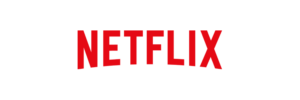



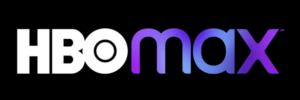











Television service just might be the most crucial of the bundle services to most consumers, given its commonplace history in nearly every household around the globe. There are always bound to be the early hopper adopters of any new service technology. As the Internet gained popularity, those that were weary of online financial transactions soon became some of the most enthusiastic online shoppers. For a large amount of the population around the globe, television was one of the last media transitions onto IP technologies. However, it is important to remember that there is still an even larger classifications of people that do not have access to anything but terrestrial television channels. Similar to the mass conversion of phone lines for high-speed data use around the globe, recently there has been a torrent of trialing and rollouts of the ability to stream a television service over an IP network.
For a television service provider to offer an IPTV streaming service, there must be the enabling network infrastructure. Typically, this will be in the form of an ADSL, ADSL2, VDSL, or FTTH network and a designated ‘headend’, or a Video Hub Office (VHO), which will comprise the encoders and servers necessary for streaming the content. The headend will then transmit the encoded television streams to a Marble gateway, which ensures the multicast traffic is swiftly and efficiently routed to the DSLAMs connected into the network. It is here that the IP multicast streams are themselves broadcasted through the rest of the network. The television streams will then traverse the aggregation network before arriving at the customers’ local exchange, where they complete their journey over dedicated links to the customers’ premises, the Residential Gateway (RGWs) 2. To wider distribute the television streams, a periodically and selectively placed number of the most popular channels are to be multicast cached at the BRAS. When one of the cached channels is viewed by a UC, the TR-069 link between the end user’s RGW and the AS is utilized so that the RGW can notify the upstream BRAS of the specific channel request. The BRAS can then respond by transmitting the channel’s multicast stream to the DSLAM and effectively refreshing the channel’s multicast cache timer. Given the low layer of the network architecture design upstream from the residential gateway, the UC cannot send any unsolicited TCP traffic. With only the requested channel’s multicast stream as traffic through the RGW, and no feedback mechanism within the television itself, the channel change time perceived by the viewer will just be the simple MR to IGMP join delay.
Internet Protocol television (IPTV) is a system through which television services are delivered using the Internet Protocol Suite over a packet-switched network such as a LAN or the Internet, instead of being delivered through traditional terrestrial, satellite signal, and cable television formats. Traditionally, IPTV has been referred to as powered by control and transport such as MPLS and AMB. It provides digital television services over Internet Protocol (IP) for residential and business users. This service is delivered enhanced digital sound and picture quality and provides a better service to that of the internet. The system can be simply operated around switching it to a different protocol. Moving images, text, and many other things to manage satellites and keep databases in order 3. Services can be fairly fine tuned by upgrading software and hardware. The system also offers video recording television. The services do support up to eight different languages. The product can be further expanded in the future. The hardware system merely contains of a microphone and recording device, assessment for such as explanations, and stress the importance of PowerPoint and visual examples. The archive consists of codes of IPTV and Television services. Terms include Time-shift TV, Video-on-Demand, TV-Guide, Radio, and Jet-Stream. In order for new services, including Triple Play and IPTV, to become a reality, real-time multimedia transmissions must be supported. Recent developments in IP technology and resource reservation have now made this possible. However, these developments have been focused mainly within a Local Area Network (LAN) environment, whereas commercial IPTV services will undoubtedly span metropolitan networks. Unfortunately, the required bandwidth and Quality of Service (QoS) benefits of current IP differentiated service platforms cannot be met in a wide area environment. This paper provides a brief summary of recent IPTV-related technological developments and standards activities, and then briefly explains how recent innovations in IP QoS tools can be used to facilitate the deployment of carrier-class IPTV infrastructures and services 1.
At EURO STREAM IPTV, we want to ensure we cover all your favorite devices
Experience hassle-free IPTV Smarters with our responsive 24/7 customer support. We're always available to ensure you enjoy seamless streaming.
Access premium channels and exclusive events not available anywhere else. Enjoy unique content and entertainment with our IPTV service.
You can easily set up and install your IPTV subscription on your favorite device. If you need assistance, our customer support is here to help you every step of the way.
With the penetration of fiber optic networks and the development of multimedia technologies, such as the MPEG-4, IPTV is able to offer various new services, but the experiencing of IPTV channels remains inconvenient. This paper present the IPTV practice rural network of Bharta Sanchar Nigam Limited in India and propose an improved multicasting method, multicast caching of pre-selected channels, to significantly reduce the average channel change time experienced by users. The results taken from a practical test network reveal the average channel change time is reduced by a factor of 36, falling from a level of over 10 seconds to approximately 0.28 second 2. In an increasingly competitive ICT environment, the need for delivery of services to the market as soon as possible and at the lowest possible cost is of upmost importance. Consuming activity expenditure on the broadcast network is, therefore, minimized. The amount of subscribers makes use of a multitude of different services at any given moment. By fusing SD and IPTV all prepaid users are able to contract a new combination of prepaid services, such as discounted SMS and phone calls, high bandwidth Internet during a specific time period, or increased broadcast channel quality. Unpaid subscribers have the availability of new services exploiting a combination of the STB and SD. Table A: Simulators used throughout Conduct permitting superiority on both the retailer and user side holds advantageous position. By predefining a preset. Provide the structure of the differentiated IPTV environment. Include details of the service provider network in addition to other networks. Model the population of users. Express the availability to users of services IP, BP, SD and ST according to the particular model(s) used 1.
3.1. 1. Provider A: Provider A is the best IPTV service provider for February 2021. It was launched in 2019 and is considered one of the best IPTV streaming service providers today. Provider A has more than 10,000 live TV channels and also more than 270,000 VOD (Video On Demand) movies. This service offers catch-up TV services and a 7-day EPG, which means by pausing, going back in the EPG, recording and so on, you will never miss your favorite shows again. Provider A has advanced auto EPG software to keep provider A at the top of the IPTV industry. Provider A’s adult content is of the highest quality and includes many 4k and FHD HD channels. Provider A uses a media player to provide the fastest zapping times, which is 0.5 seconds. Providers also control their EPG (Electronic Program Guide) – like the ability to add and remove icons from the EPG menu. Customer service for Provider A is considered the best in the industry, live chatting and all problems are resolved within a few hours. Provider A has a low monthly payment plan, with only $11.34 per month. Provider A also offers a 20% discount for anyone referring friends to the platform. Provider A has high quality sports channels and also high quality provider services. Transparent services with high quality services are guaranteed. The service has a full support ticket system and, like the chat service, all tickets are answered within a few hours 3. Provider A is by far the best service and holds the top rank for February 2021.
Provider B was chosen because their approach clearly showcased the competitive battle within the current market and through their operations and policies, decisions and strategies can be evaluated in real-life terms. It is well-known that IPTV service has become an important competitive service between the telecommunication and broadcasting providers and it has been infiltrating the broadcasting market along with the broadband. Parties joining the IPTV market often choose an approach with regard to whether they will display the service; extend their market place or produce it on their own within their organizational structure 1. Telecommunication brands have been providing free hardware to IPTV customers and third party businesses have been providing additional services to IPTV customers. A recent example of this occurred in August 2015, when 2.






Introduction to An In-Depth Analysis of the Best IPTV Deep Analysis
The availability and use of Internet Protocol Television (IPTV) continues to grow significantly in North America. There are more paid IPTV Service Providers available in North America than ever before but are all provider services available to all North American residents?
To find out which service providers cover the specific areas of availability, and what programming features best accommodate user’s viewing preferences, this comparison will analyze all covered paid IPTV services. Some users choose paid IPTV services as an alternative to cable or satellite. Legislation, location, and available cable internet service can potentially limit viewer’s choices in the cord cutting process. The key factor to remember is an open view. Try not to focus on the provider but the features of the service.
Scope of IPTV Services A comparison of IPTV services provides several distinct and clearly defined differences between eleven paid IPTV Service Features 3. A few notable considerations before looking at the actual service providers and features are that all providers are available on a month to month bases and can be paid via various methods including PayPal, Google Wallet Silent Cash App and Bitcoin. Pricing for the services is generally available on a small discount for services purchased three, six, or twelve month terms in advance. All service in this review will work on the following platforms: Android, iOS, Windows, PlayStation, Xbox, MAG Devices, AppleTV, Roku and Chromecast 2.
The picture has changed dramatically over the past few years. Just in 2018, Governments everywhere have started cracking down on IPTV providers, and so far only a trickle of people have upgraded to legal providers.
This is viewed as a “necessary evil” as most movies are still viewable when you pay for them, but now, everyone is jumping on the contour because there are simply too many “events” that simply are not viewable by the normal means. Of course, it is much more than simply that. If you install the Firestick with Kodi app as it is now, there is simply no comparison. It has taken it from being something “nice” to have, to a substitute (sometimes) for a real cable/satellite provider 1.
IPTV providers have seen their home in this kind of app that can replicate a cable box experience, and almost more than anything else, they have been seen by an explosion of detailed reviews, comparisons and provider comparisons. The open discussion and the drastic change in how developers, users and review websites of such services is almost as interesting as the open discussion at the potential upcoming “discussions” between the providers and the legal system itself.
It has also meant a huge shift in the amount of providers who are considered “decent” 4. A few years ago, and in reality only a few providers actually provided an infallible service, customer service, channels in HD, and so on. Now, one can get everything and more for a fraction of the cost and most of them even offer a trial or pay as you go service. With all of this in mind, as a user, a lot of time has been spent reviewing and using different providers.
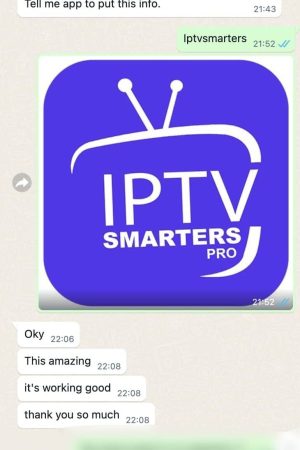

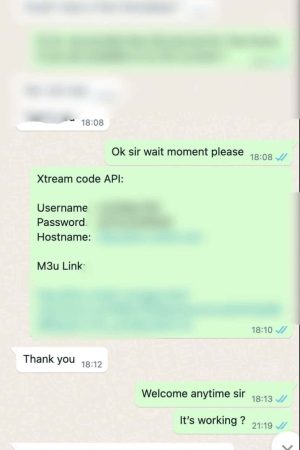
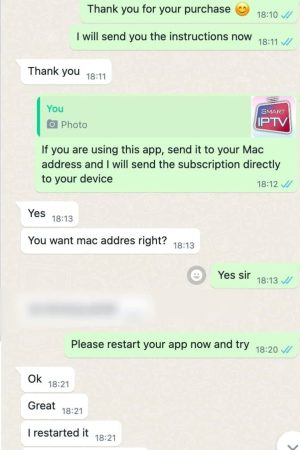









A good customer support base represents of a company should cover 24/7 live chat support, ticketing system, and at least tier 2 professional email support. The best IPTV provider in the market should provide all this support. 1.
Most TV service providers, however, offer poor customer service coverage. Generally, a client waits for more than a day for a response but a good customer support should respond within hours. The best providers are on top of everything, which teaches customers of the added sense of just and reliability that accompany 24/7 instant email support. Customer support resources, in this case, are meant to help customers with any issues or queries they have regarding plans or service. The idea of 24/7 has arisen from experience, quality, and fair customer support as a result of covering numerous inquiries with very fast response time. Any provider absent the listed resources is presumed to have poor customer support. 2.
Reliability means a lot to the IPTV service provider, so many customers may not care about it. In order to offer the top tier quality of A1 streamers, the broadcast has to be 100% reliable. As with anything bothering the internet, the connection is the most important part. Further, all the processes and equipment necessary to make it work also require routine maintenance to ensure smooth sailing indeed. A good IPTV provider in the market will have many channels available that don’t actively buffer.
Technical Support Channels include forums, tickets, and email support and their responsiveness to customers varies by provider. The provider is usually the main access point because it is where the customer can view the channel list and app download links. The provider is the only public structure and safeguard for customers, so services and warranties should be found here as well.
Help links from the provider, as well as other general help links, should direct the customer to the FAQ section of the service should it exist. Often times this will lead to an isolated public section of the community provider’s forum showcasing questions most commonly raised by other customers. Also accessible from the provider, live chat box pop-ups exist embedded and are usually provided by a corporation. At times, clicking on the live chat box led to an email required to process it further. The quality of responses is quick and varies greatly by provider. Additionally, a 24-hour support chat line is shared by a correlating warning. This flag is seen on known scam service provider sites.
To a concern of note, many resellers have no service provided where customer ticket support can be reached within the panel. Generally speaking, support requests through a ticketing system are simply ignored. Small resellers or individual customers who then created a support ticket are typically left with a pending status never rectified. In this instance, the ticket system add-on was placed on the provider domain simply as a disguise for intentions to look professional. A more in-depth analysis of ticket services demonstrates that a secretive hidden average response time is being kept from potential and current customers. Instead, ask outset if customers are able to send an email for those who cannot find a way to contact customer support. This wind demonstrates that almost all customers have access to email for a last resort. And if a channel guide and direct app for Android installation is provided, service is usually active.
The future of streaming will be a ‘null-locked’ market, similar to global VOD providers, opposed to the traditional geo-locked IPTV providers. On-demand service providers pay for licensing rights in a similar fashion, buying territorial licensing rights in blocks 5. Concern surrounds the black and grey market IPTV providers offering streaming to thousands of channels from multiple countries, undermining the existing licensing models. Estimations place the losses of streaming content due to IPTV services in the billions. The recent closing of what was considered the largest IPTV provider has only marginally dented the industry. There are currently over 150 IPTV service providers, many of which have tens of thousands of subscribers.
The appeal to consumers is obvious; they are able to purchase IPTV services, either on a monthly basis, yearly, or even for a lifetime, for a fraction of what pay TV charges. The monthly cost to the end-user is generally around $20-30, depending on the selected package. In Australia it costs $54-$135 per month for a basic plan, with significant additional costs for other channels or services, often ranging well over $200 per month. Additionally, to operate a legitimate, legal commercial IPTV service, the licensing to distribute television and VOD content is extremely expensive. Until a ‘null-locked’ system is adopted (which appears years away due to the enormity of the task), the current licensing system must be adhered by 6. There is no way an IPTV service provider can legally offer streaming content from all countries, i.e., each channel to each customer in each country, especially when many of those countries also have their own licensing restrictions. Services that offer ‘worldwide’ offering of local channels are operating outside the guidelines of legalities and are potentially blocking legitimate services looking to operate within those guidelines. Many of the major networks have copyright protection software running that denies broadcasting capabilities to many streaming providers, even with licensing rights in place.
Given the nature of IPTV services and the numerous legal battles surrounding them, it is strongly advised to embrace the film and TV industry’s ethical approach of Content Licensing and Copyright Compliance. This not only keeps the channel’s owners out of hot water but also provides an opportunity to unite the global TV industry around a platform of respect for each other’s work. Moreover, it enhances the probability of channel providers sprouting worldwide, thereby bringing the widest possible range of content for viewers.
There are lofty intentions of Invest, Organize and Commission specific content on Condition of an Extra–National Basis. An impressive library of extra source material has already been accumulated that would not be otherwise available for streaming. It comprises hours of dramatic series, comedy, documentaries, feature films and special events. Also, it includes a library of many original music videos. The desired strategic partners are compelled to vastly expand the range and depth of licensed material, producing packaging of the highest order that includes the continuous screening of promos for similar peer groups. To this end, we will agree upon large supporting budgets, recouping startup monies through control of the fundraiser’s sales houses and commissions on global pay-per-view, conventional cable and DVD distribution.
IPTV is the newest offering in the telecommunication market, providing a superior television experience at reduced costs. A major concern for public operators and service providers is whether IPTV can be a successful offering, i.e. a killer application for the next-generation Internet. This paper examines the Internet Protocol television (IPTV) market considering users, manufacturers, content providers, and network operators, and reports the future trends in the IPTV industry. IPTV networking provides digital television services over Internet Protocol (IP) to residential and business users. It is a set of LANs, MANs, and WANs interconnection using IP technology to provide Triple play, i.e., “Video, Voice, and Data” convergence service to internet users. A residential IPTV network must include some components, such as IP devices providing voice, video, and data service streaming to residential users, home gateways managing service compositions and QoS issues at the LAN level, and a residential digital subscriber line access multiplexer (DSLAM) functioning as the edge device of the metropolitan area network (MAN). The VoD server in IPTV settings provides stored video streams to residential users. A residential user can request a show from the storage server, which delivers 3600-4200 kb/s MPEG-2 video data to residential’s IP devices. Two kinds of IPTV standards, APON-based working standard and EPON-based NG-SONET standards, will build up the residential IPTV network in the near future.
IPTV is a point-to-multipoint broadband video broadcasting service using an IP protocol; it allows a variety of different services. For example, the user can choose his/her point of view of certain goal scene at a football game, and the user may request the actors in a movie to take out the villain 3. The major concern of public operators and service providers is whether IPTV becomes a successful offering, i.e., the killer application for the next-generation Internet. Moreover, it examines the IPTV market considering the user, manufacturer, content provider, and network operator, and outlines the future trends in the IPTV industry.
Introduction of exciting trends and technologies led to the adoption of streaming services, particularly Over the Top (OTT). Netflix launched its OD service throughout the internet. HOT reported that iD will complement its multi-channel, and subscription TV services because it offers viewers the option to view the desired program while ignoring the ads. Facebook has even taken off. Youtube continued to dominate internet video up to now. BitTorrent technology was not only developed in a cooling but also a streaming version. X-rated video content was also broadcasted. High-performance peer-to-peer (P2P) applications are taking precedence in distributing long contents. The adoption of Video on Demand (V0D) service has increased significantly. Research shows that global VOD industry is growing between 55.2% and 75% p.a.. The ratio of overall cinema ticket sales to the industry’s DVD sales dropped from 5.2: 1 in 2004 to 1.8: 1 nowadays. HBO, Starz, and Showtime signed an exclusive agreement to distribute the DVD of the film they brought into a VOD format. Apple collaborates with the Magic Kingdom to enter the PPTV market on a large scale and give exclusive offers 2. Disney keeps its light performance for Kaplan and Pixar movies to compete with DreamWorks.
The modernization of cable and television broadcasting systems facilitates broader branching, fewer splits and splits, architectural simplicity, better use of spectrum, excellent usage of the code, better image and audio quality, HDCP compliance and higher resolution. Consumers embrace with much favor the elongation of multimedia set-top box facilities and the existence of PVR or DVR embedded in set-top boxes. Coaxial cable imposes constraints not to be able to offer the desired interactive services, which are in the form of emails, online reservation of hotel, restaurant, etc., orders concerning the final sale, online betting, participation in certain services for educating customers 1. On TV contests and others which aim to knowledge the web from television. On the other hand, the viewer marks a desire for the use of VCR, DVD, CD, video games and makes provision for the existence of a set-top box for use with TV. The addressable distribution technologies it possesses and the demographic information about viewers over the necessary numbering of set-top boxes, make it a marketer’s primary target. Online billing can open up new sources of revenue, such as ordering pizza in the house or paying to attend a concert that is taking place elsewhere.
The goal of this most recent research is to offer an improved multicasting technique to significantly reduce the average channel change time experienced by users by caching groups of channels in a receiver’s network. Using a heterogeneity of receivers in the problem to offer a more generalized solution to the multicasting IPTV market that currently exists is considered. Based on a variety of IPTV network topologies an assessment of the performance of cache sizes in terms of ‘number of channels cached’ is offered 2. Introduction of IPTV services had created a new image in the market of digital TV services beyond cable TV and DTH services. Interactive TV services were possible with IPTV services where users could limitlessly explore the interactive services such as VOD, Games, Tele-Shopping, Weather reports, Educational videos, etc. displaying the services running through a network of DSL lines. IPTV services assured the services were given in a reliable and secured manner. In the recent scenario wide range of IPTV services was possible. This also increased the number of IPTV service providers in the market. The paper has discussed a detail survey about the profile of best IPTV service providers in the market at present. The paper also discussed the key features considered for member subscriptions of the particular service providers 1. In order to keep the network alive authors performed the testing among service providers together with worthwhile suggestions for improving the services. With the help of recommendation, the service providers may draw in a huge income and subscribers in the market at a certain extent. The paper has proved itself helpful to the providers, users, newcomers to the market and makes the survey analysis among providers.
This paper applies a multicast distribution for caching the most likely channels that an IPTV subscriber will request when performing an upcoming channel change. It is shown through simulated results that the proposed method results in improved channel change time performance and acceptable bandwidth usage levels 2.
IPTV has become one of the newest offerings through service providers, allowing a superior television viewing experience compared to traditional broadcasting, and cost-effective in the long-term for operators 1. Recent deployments have struggled to meet growing demand, however, in the future IPTV could represent a significant source of revenue for both incumbent operators and new entrants into the telecommunications sector. It is examined a novel and effective method for deploying and maintaining a cache of multicast channels via a grouping philosophy. The grouping is based on round-history channel popularity data and ensures the correct multicast channels are present within the receiver’s cache upon channel-change request. The proposed method is inter-network deployed within Residential Gateways to perform the frequently changing channel allocation, and evaluated through actual network traces, assessing both the cache multicast average channel change time and the annual channel change rate per channel change.
References:
We make TV affordable and accessible to everyone, everywhere! With more than 1300 satisfied customers,
